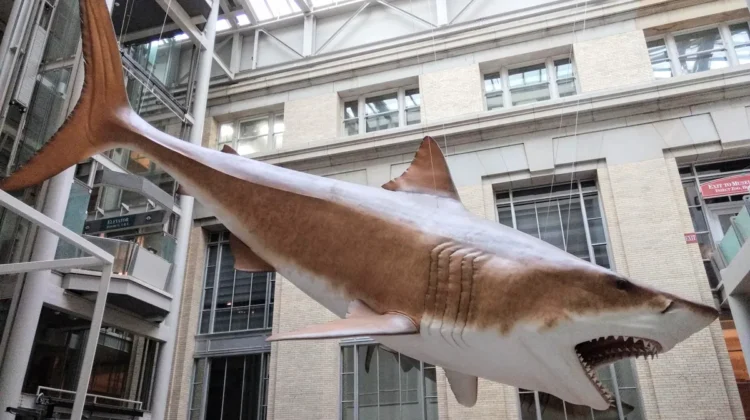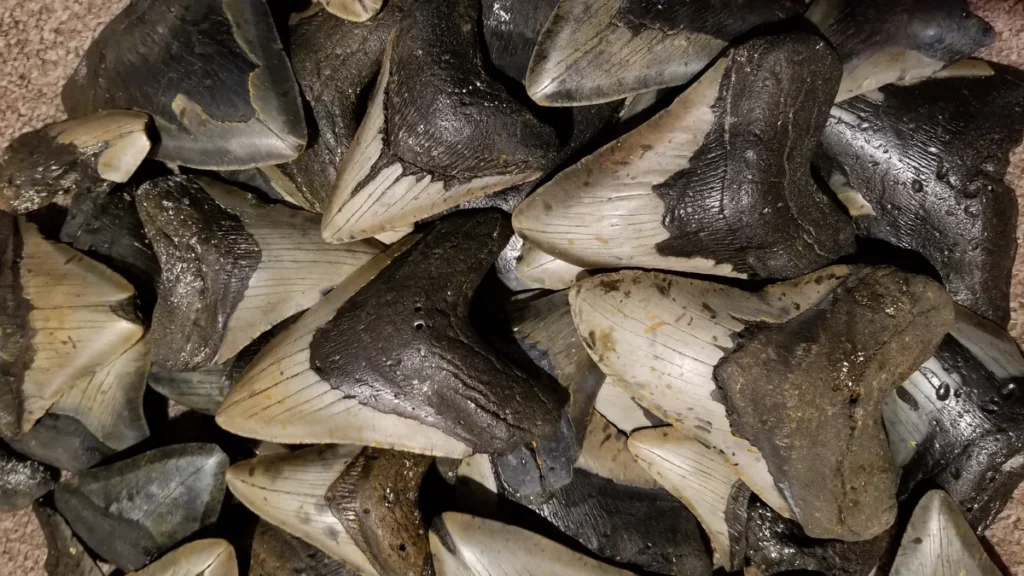
Everything was a catch of the day to the megalodons
The megalodon, also known as the megatooth shark, Otodus megalodon, was a powerful beast that once roamed the ancient oceans. They were the largest predatory sharks at the time, reaching a whopping 16 meters in length (52 feet). Female whale sharks, which average 4.5 meters in length, are currently the largest predatory fish in the ocean (15 feet).
Unfortunately for them (but fortunately for many other sea creatures), the megalodon died out 3.6 million years ago. According to a new study published in Science Advances, the megalodon had the highest trophic level (the position of an organism in a food web) of any living or extinct ocean predator.
But why is it important to determine the trophic level of extinct animals?
“The trophic level of extinct animals can tell us about their place in the ecosystem and may help us understand the evolution and extinction of specific animals.” Dr. Emma Kast, the study’s lead author, told IFLScience.
“On a broader scale, determining the trophic level of extinct animals can aid in our understanding of the ecology of ancient ecosystems in general.” The megalodon’s super high trophic level, for example, may indicate that food chains were longer millions of years ago. How and why could this previous ecosystem support such a high trophic level predator? These are intriguing questions that we can begin to address.”
It has previously been difficult for scientists to determine the trophic level of long-extinct species using methods developed for extant animals, so the trophic level of the megalodon could not be determined… That is, before this study.
Animals need nitrogen in their diet, and the nitrogen isotope composition of animal tissues is a popular tool for determining trophic levels in modern ecosystems. The ratio of nitrogen-15 (d15N) to nitrogen-14 (d14N) can be used to determine trophic levels because animals acquire more nitrogen-15 from their food at higher trophic levels.
“Nitrogen isotopes have previously been used on ancient marine animals, but only in the last 10,000 – 100,000 years.” Feranec et al. 2021, for example, measured the d15N of fossil bone collagen that was approximately 12,000 years old and discovered an Arctic food web structure that was similar to today.” Kast explained to IFLScience.
“Collagen is not usually preserved beyond these timescales.” Rather than collagen, we focused on organic matter within biominerals, which can be preserved over much longer timescales. Our study is the first time the enameloid-bound organic matter d15N approach has been applied to fossil sharks, and it is also the first time we have been able to use d15N to reconstruct a marine animal’s trophic level on million year timescales.”

Image Credit: Harry Maisch
When this technique was used on fossilized megalodon teeth, the ratio was much higher than in orcas, modern white sharks, and polar bears.
The data also indicated that Cenozoic marine food chains were two steps longer than they are today. The megalodon shark could have fed on nursing mammal pups and even cannibalized smaller megalodon sharks.
The scientists discovered a wide range of nitrogen levels in the different tooth samples they examined, indicating that not every large individual was at the top of the food chain.
This team has some exciting research projects in the works.
“There’s still a lot of interesting work to be done!” On the one hand, there is still a lot to learn about the megalodon; for example, we only looked at adult teeth in this study, but we’d like to see if juveniles have very different diets, similar to how the white shark does today. We are also excited to apply this mineral-bound d15N approach to other animals in the fossil record to improve our understanding of past food webs.” Kast explained to IFLScience.

Leave a Reply